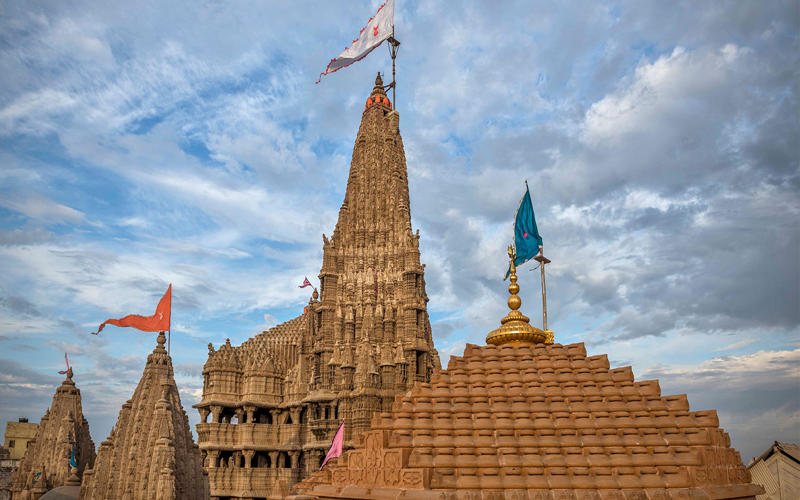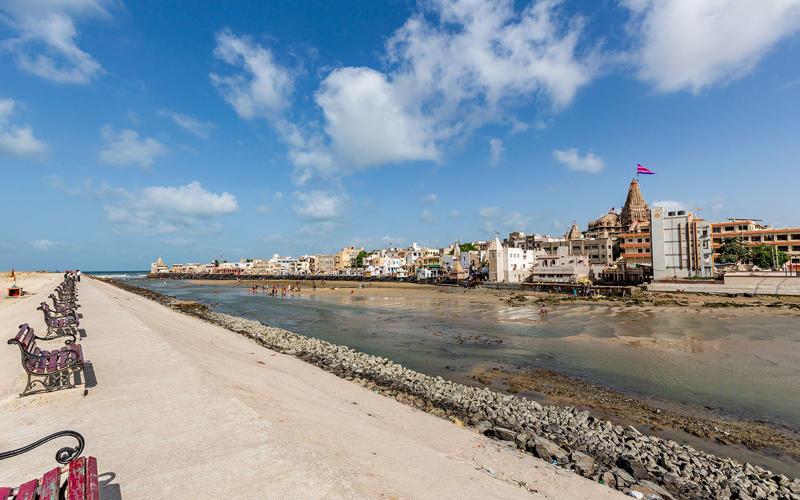Description
Dwarkadhish temple is situated in Dwarka in Jamnagar District in the State of Gujarat. The history of Dwarkadhish temple will certainly grapple one’s attention since it is in a way related to Lord Krishna. The temple has been dedicated to the king of Dwarka, which once belonged to Lord Krishna. It also means Jagat Mandir or Nija Mandir. Dwarkadhish temple is believed to be built over Hari Griha, which means it has been built just over Lord Krishna’s residential place. The holy shrine built on 72 pillars which support the 5 storied building. Archaeologists propose the temple to be 2200 years old. It’s believed that Lord Krishna’s grandson, Vajranabha built this temple on the land reclaimed by Lord Krishna from the sea. Dwarka is itself situated on the banks of River Gomti.
The main draw for tourists coming to Dwarka, the Dwarkadhish Temple (Jagat Mandir), is believed to have been established more than 2500 years ago by Lord Krishna’s great grandson, Vajranabh. The ancient temple has been renovated several times, especially leaving imprints of 16th and 19th centuries. The temple stands on a small hill accessed by 50 plus steps, with heavily sculptured walls that cocoon the sanctum with the main Krishna idol. Around the complex lie other smaller shrines. The walls have intricately carved mythical characters and legends. The impressive 43 m high spire is topped with a flag made from 52 yards of cloth that flutters in the soft breeze from the Arabian Sea behind the temple. There are two doors (swarg and moksh) for the entry and exit of the temple. A bridge called Sudama Setu (7am–1pm, 4–7.30pm) at the base of the temple takes one across the Gomti creek towards the beach.
Dwarka on the western tip of the Kathiawar Peninsula is clubbed with the holiest sites in India – the Char Dhams that include Badrinath, Puri and Rameshwaram. It is believed that Lord Krishna arrived here from Braj in Uttar Pradesh to build the city. The temple was established by his grandson. It is at the cusp of the Gomti River and the Arabian Sea, providing a scenic backdrop to the spiritual site. It is said that Dwarka was submerged under the sea six times and what we see now is its seventh avatar. The temple itself has a fascinating legend. The original structure was destroyed by Mahmud Begada in 1472, and subsequently rebuilt in the 15th-16th century. It was also feted by Adi Shankaracharya, the 8th century Hindu theologian and philosopher.
The best time to visit is between November and February, and during Janmashtami which is celebrated grandly here.


